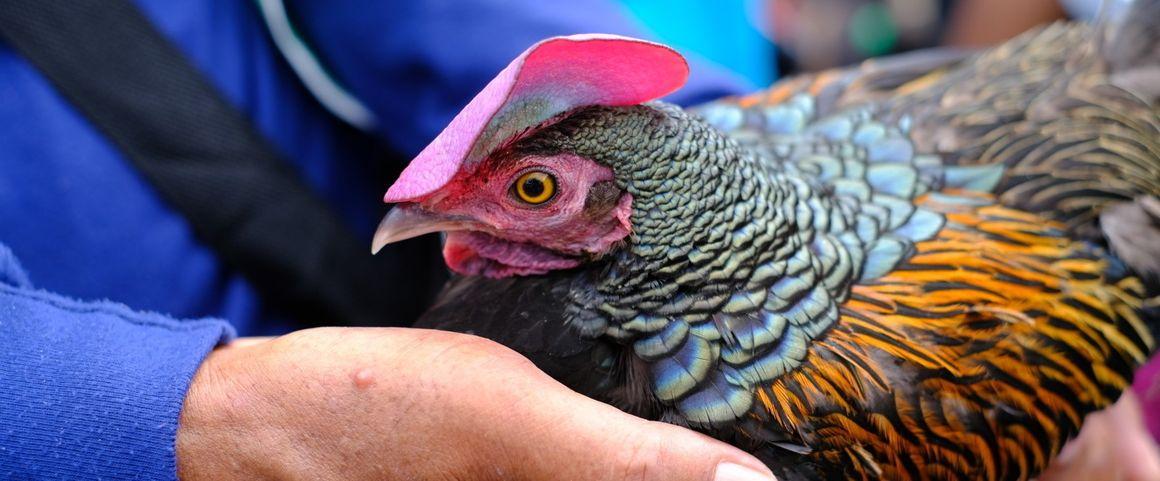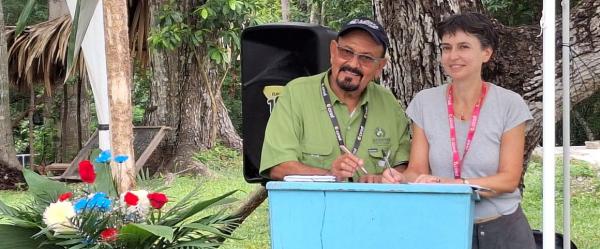Science at work 20 November 2025
- Home
- Press area
- Press releases
- Monitoring avian influenza foci
The local media can be a vital source of information for monitoring avian influenza foci

© A. Rival, CIRAD
A case study by an international team of scientists coordinated by CIRAD analysed 337 press articles from PADI-web and 115 from HealthMap, covering avian influenza foci in domestic and wild bird species worldwide, between July 2018 and June 2019. The researchers monitored the path taken by the information relating to each focus, using the sources quoted in the articles.
By compiling press articles, PADI-web and HealthMap gathered information from a network comprising several hundred sources, including official sources such as veterinary authorities and unofficial ones such as social media. The study revealed that 23% of the avian influenza foci detected by PADI-web and 43% of those detected by HealthMap were detected ahead of any official notification. For both tools, the national and local veterinary authorities were the main sources of early detection, which primarily relied on the dissemination by the online media of events recognized on a local or national level. The World Organisation for Animal Health (WOAH) was the main secondary source in terms of late detection, by virtue of its central position between the national authorities and sources such as the online media. PADI-web and HealthMap proved to be highly complementary in terms of the sources detected: PADI-web captured more local sources than HealthMap, while the latter relied more heavily on social media such as Twitter.
This study highlighted the importance of existing EBS tools in terms of providing information on disease foci that complements that from official sources, and suggests strategies aimed at improving digital disease surveillance.
This work was one of the results of the EU MOOD project (Horizon 2020 grant agreement 874850).
Reference
Dissemination of information in event-based surveillance, a case study of Avian Influenza. Valentin S, Boudoua B, Sewalk K, Arınık N, Roche M, et al. 2023. PLOS ONE 18(9): e0285341. https://doi.org/10.1371/journal.pone.0285341
In the field of automatic language processing, the pre-trained models produced by artificial intelligence (AI) algorithms provide a solid foundation for a wide range of tasks. However, to perform well when applied to specialized fields, AI models require fine tuning. That fine tuning relies on high-quality annotated data representative of the field of application. A data paper, which was recognized out of 500 scientific articles in the "Public Health and Epidemiology Informatics" category of the 2023 IMIA Yearbook of Medical Informatics, described an original method for annotating press articles, aimed at extracting epidemiological information on animal disease foci. In addition to the proposed annotation protocol, the novelty of the approach is that it pinpoints epidemiological information at sentence level. For example, this scale of analysis aims to identify text content relating to preventive measures, to how diseases are transmitted and to risk factors. The approach described in the articles, which was developed iteratively by thematic experts, is intended to be reproducible and easy to adapt to other health applications, such as plant health monitoring.
Reference
Valentin Sarah, Arsevska Elena, Vilain Aline, De Waele Valérie, Lancelot Renaud, Roche Mathieu. 2022. Elaboration of a new framework for fine-grained epidemiological annotation. Scientific Data, 9:655, 12 p.



























